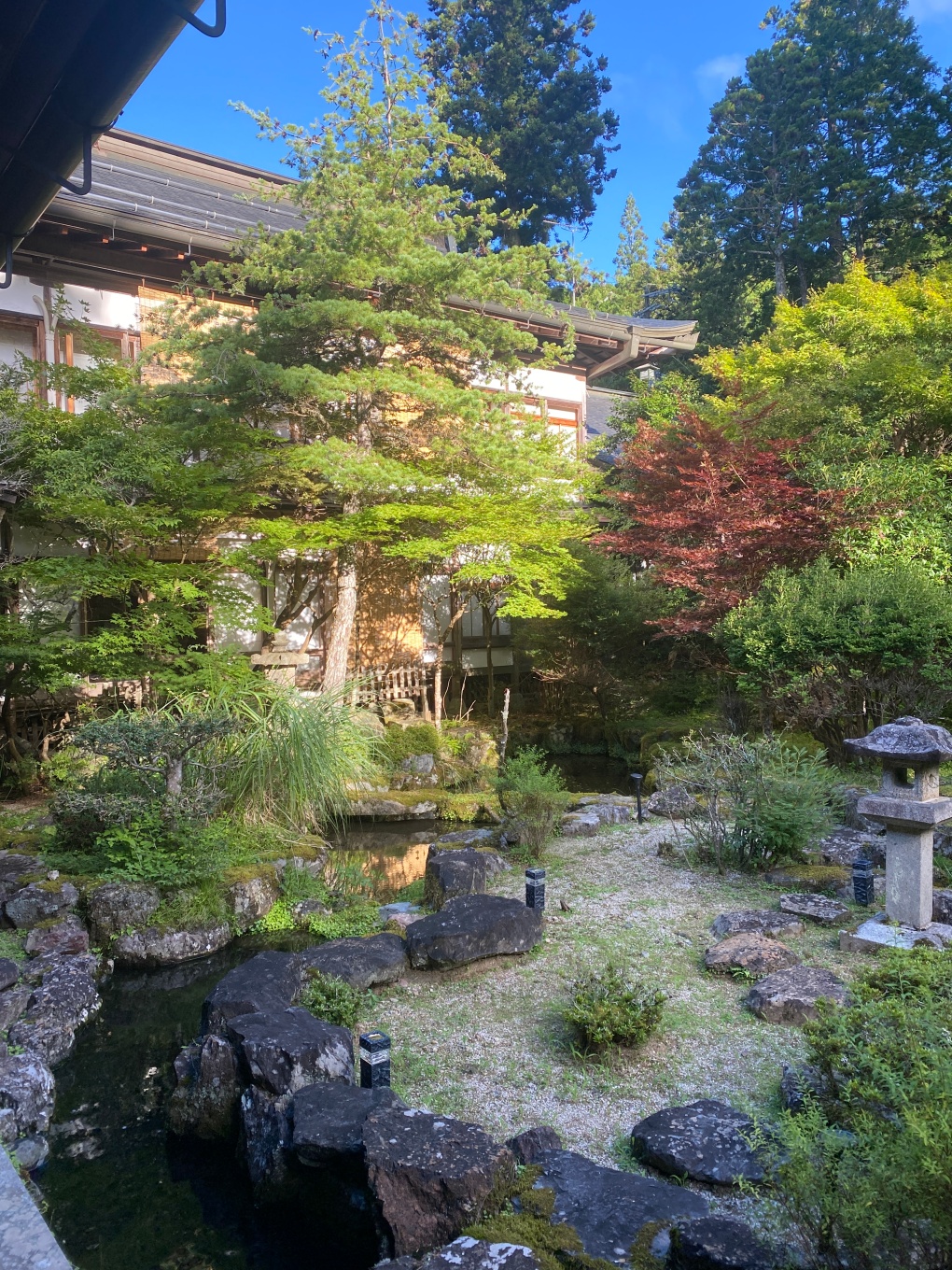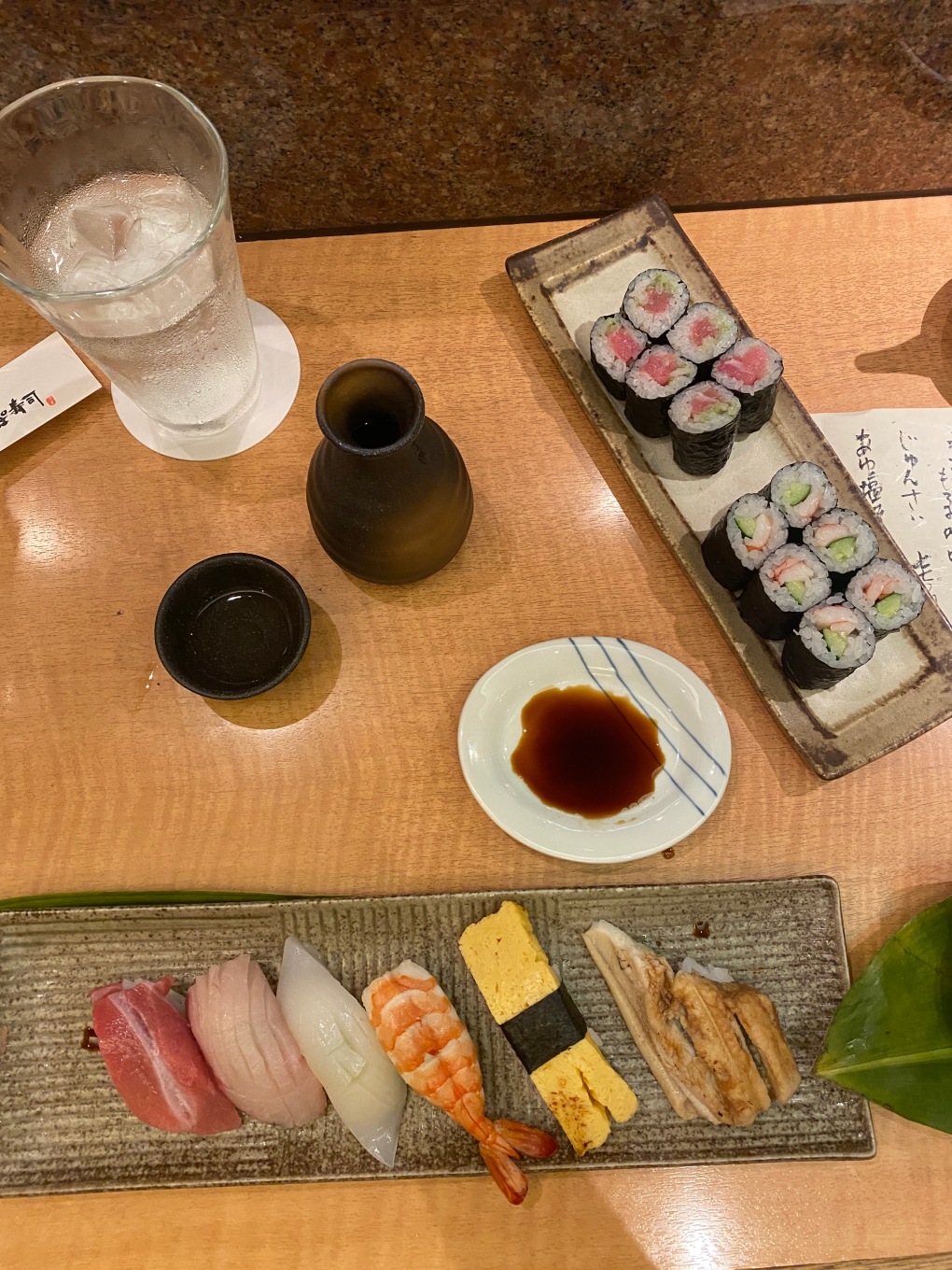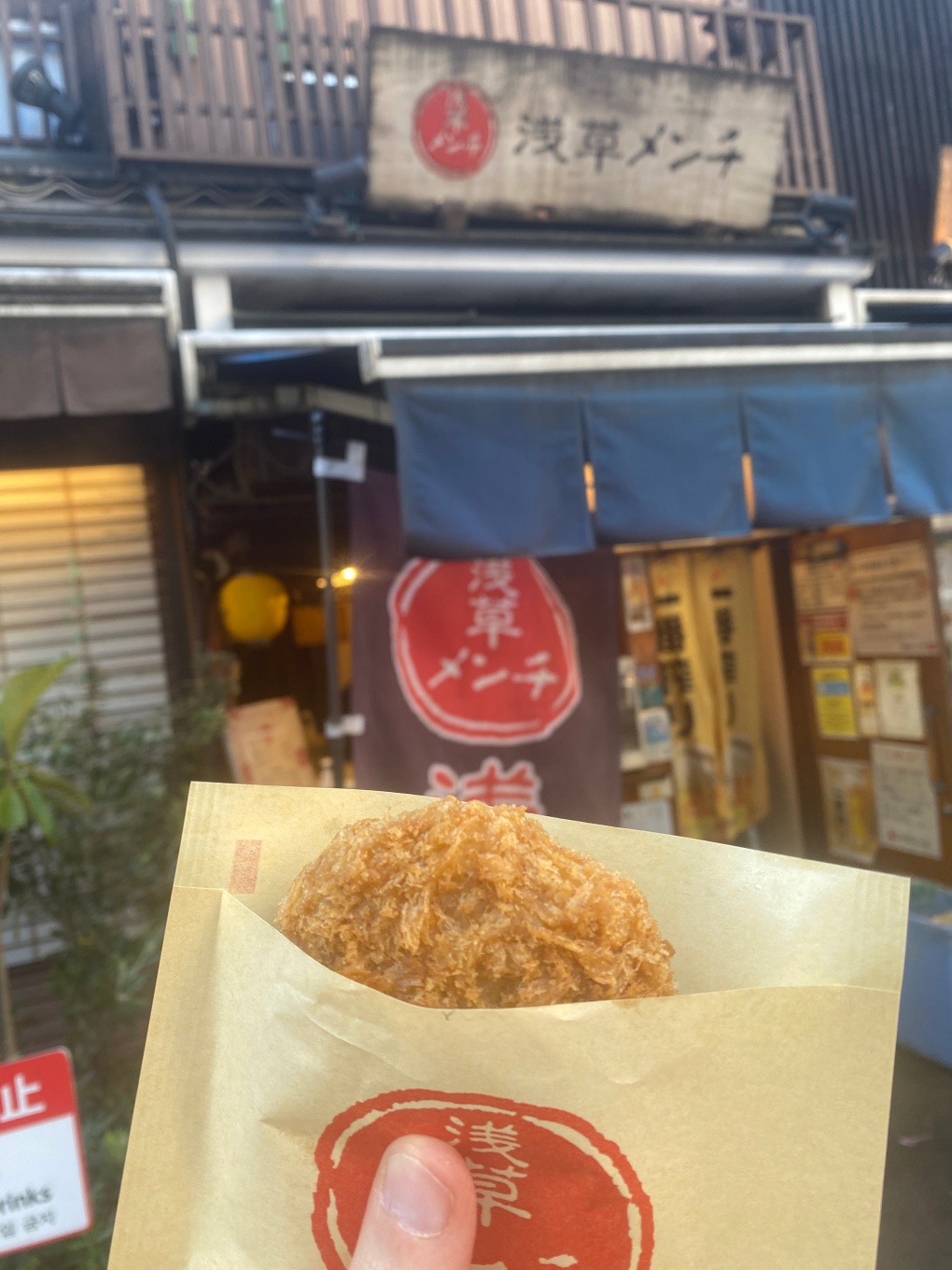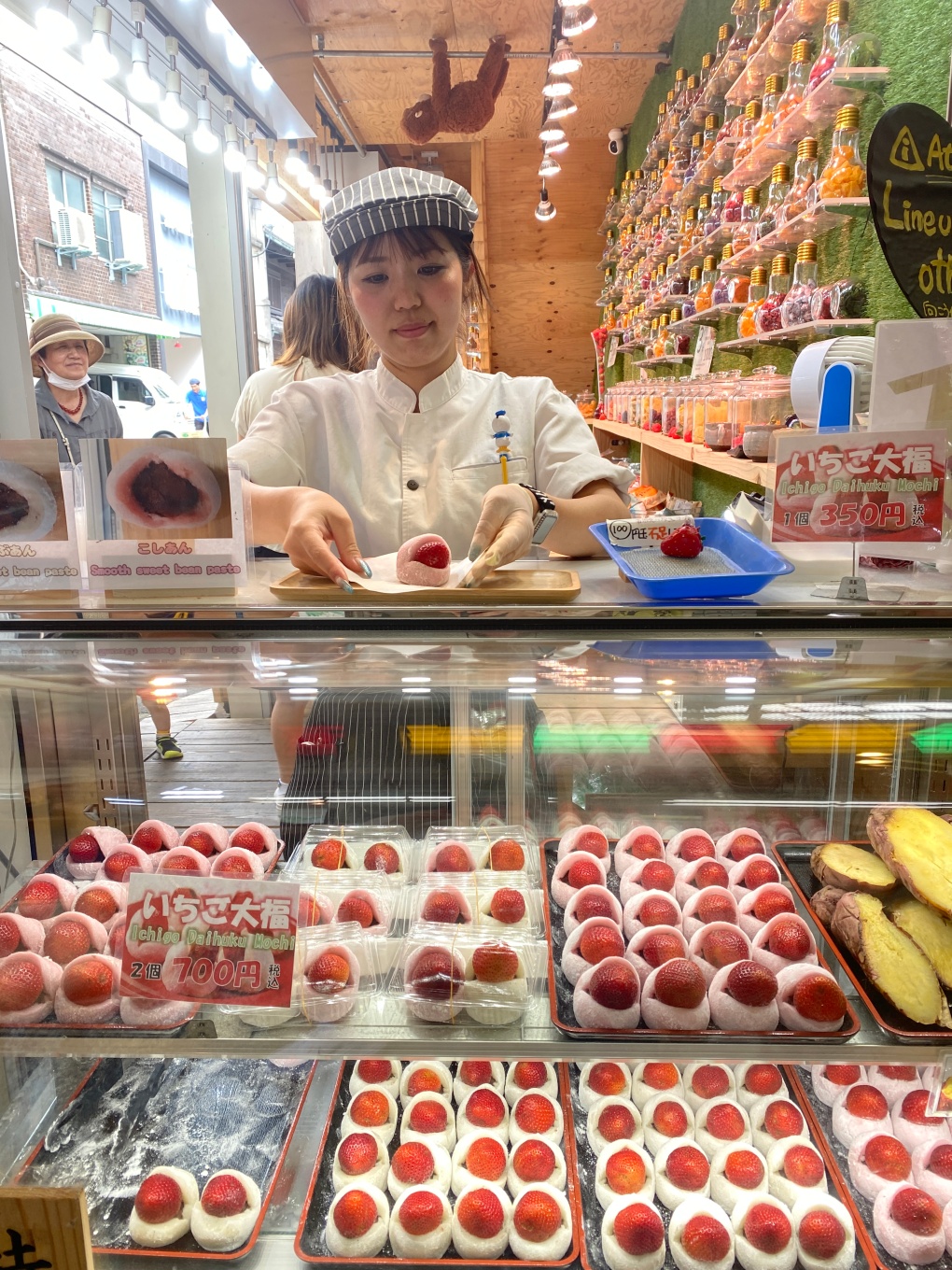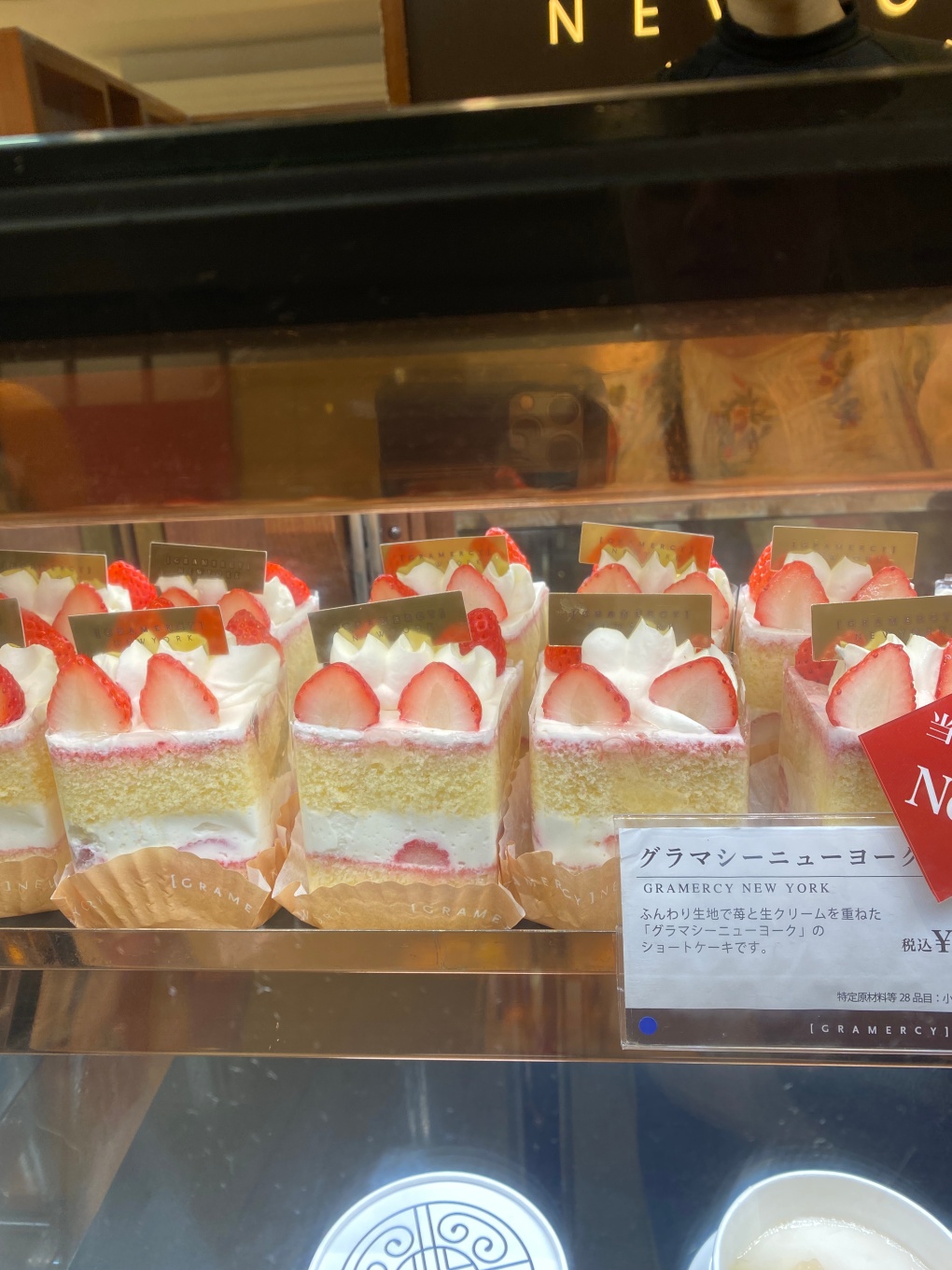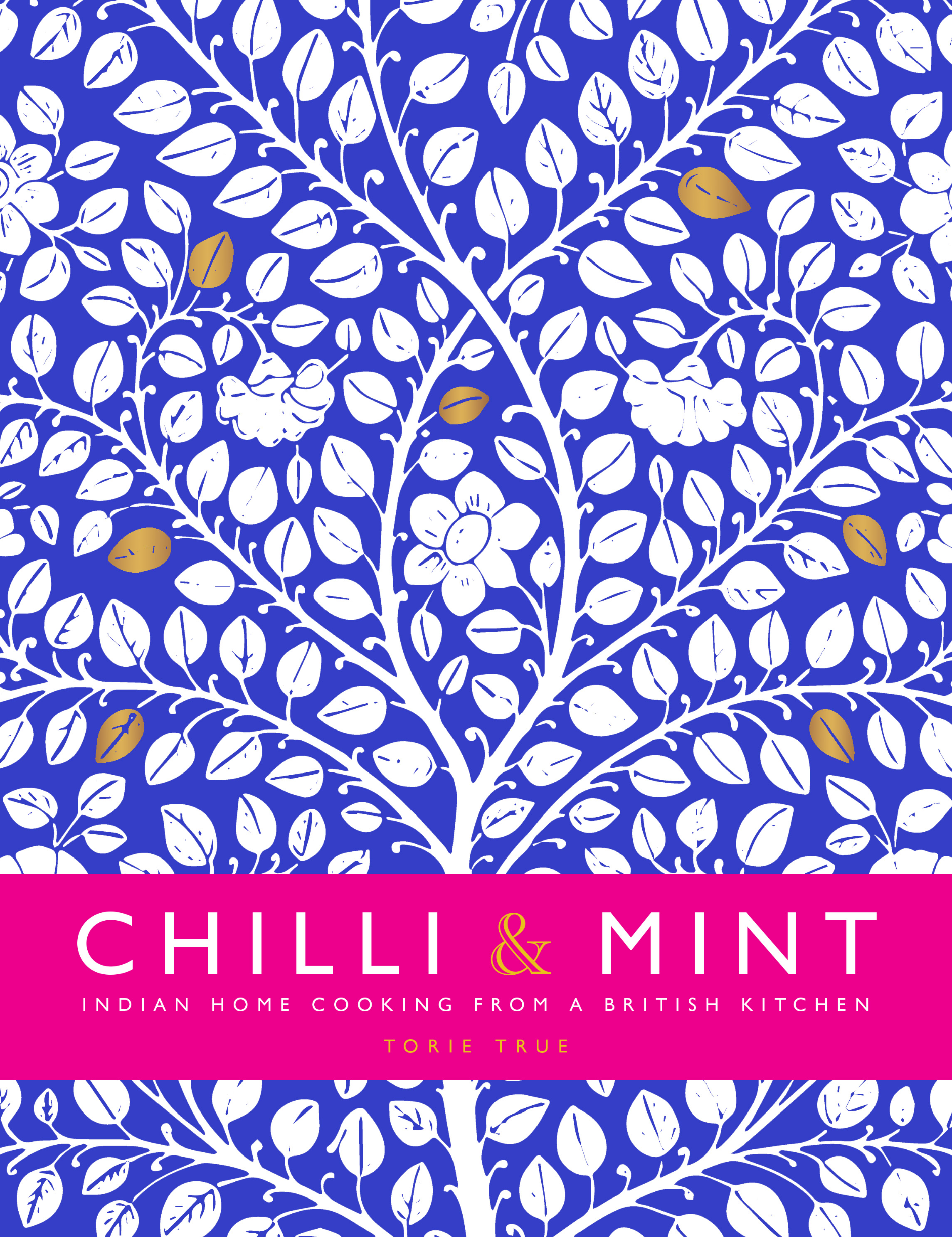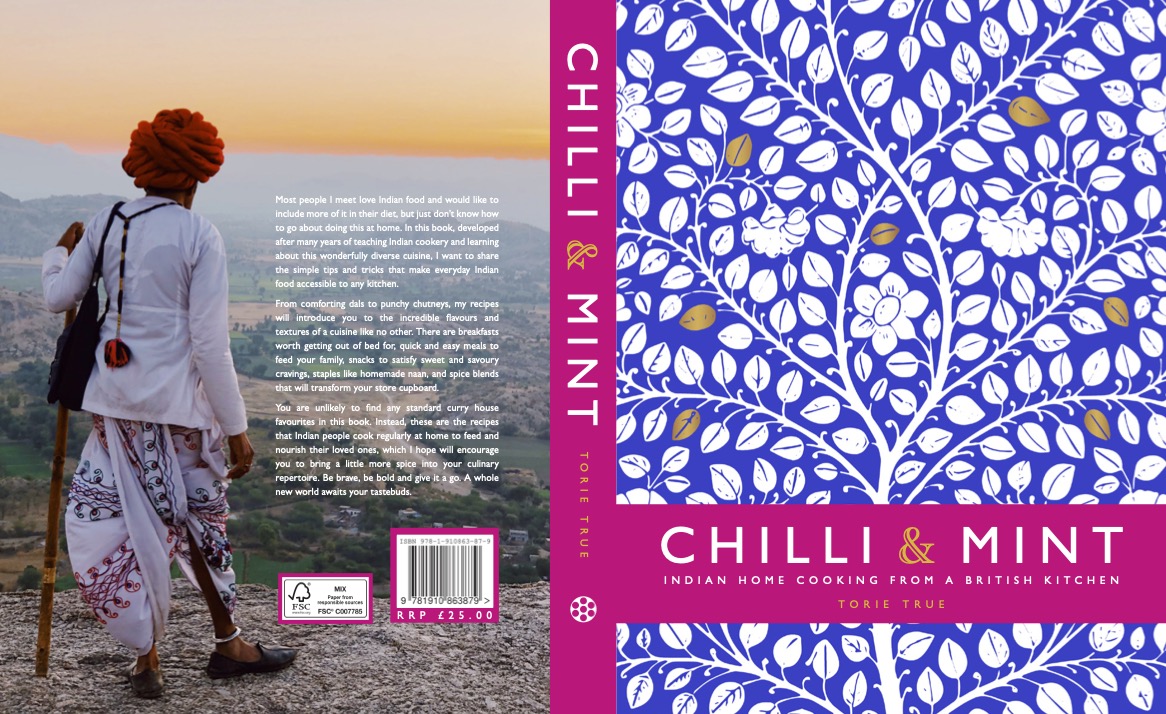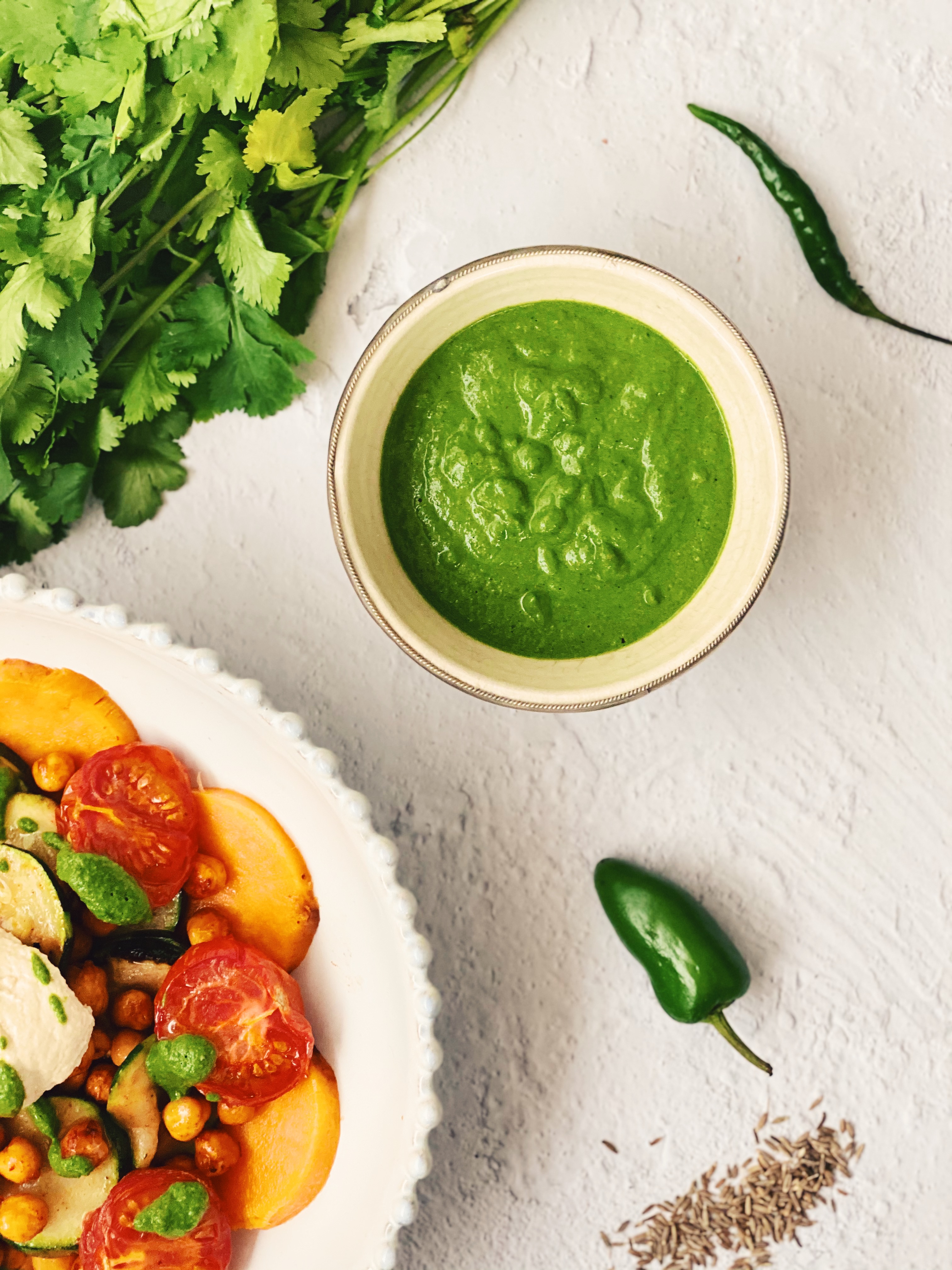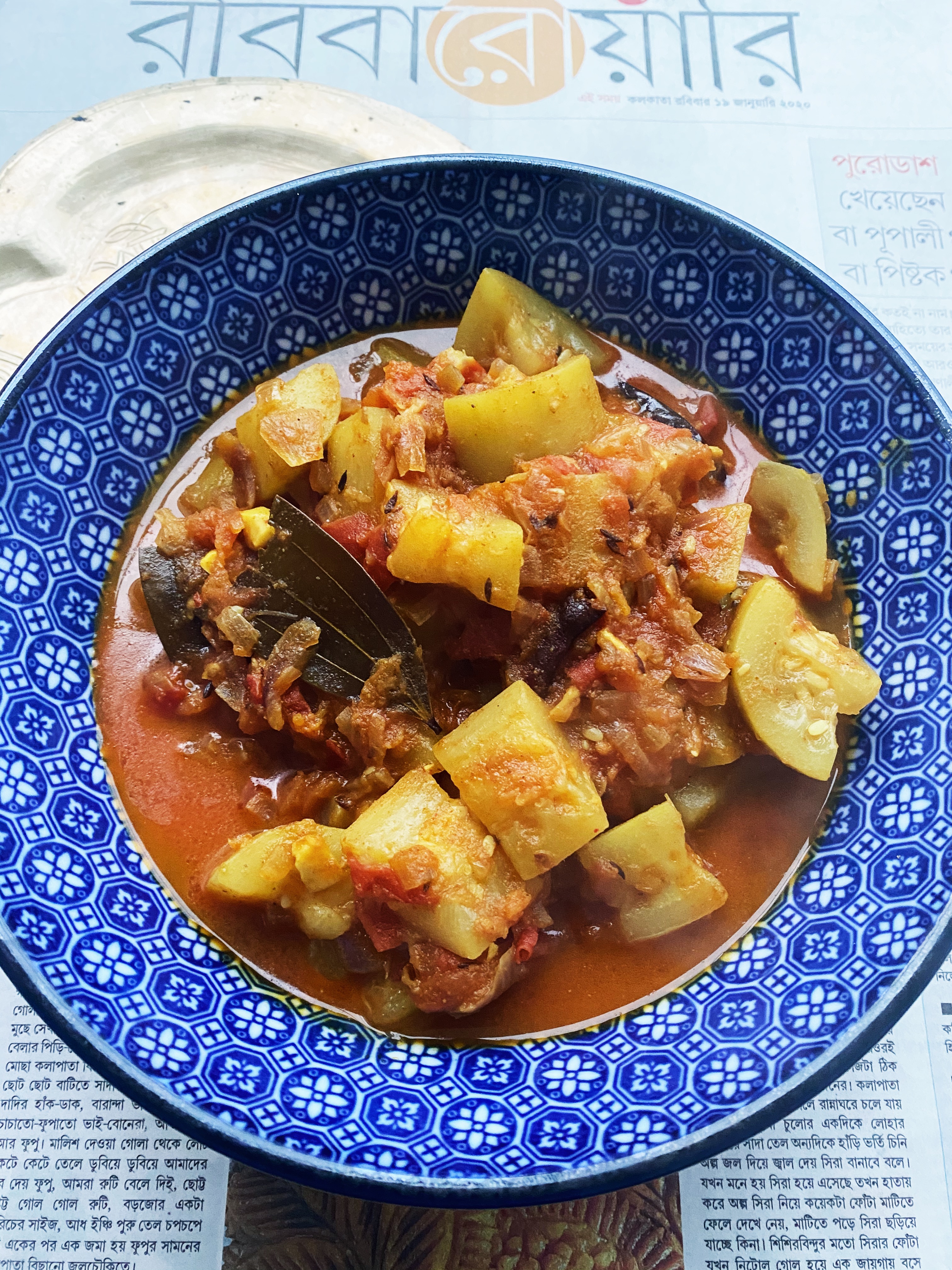 If, and when, you visit Japan may I strongly urge you to leave the bright lights of the cities for a few days and head into the countryside. Make your way to the peaceful and sacred mountain temple complex, nestled on top of Mount Koya, known as ‘Koyasan’. Here the air is cooler and the smell of fresh pine lingers softly on the breeze. It is considered the birth place of Shingon esoteric Buddhism. In 816, after years of study in Japan, the non-conformist priest Kobo Daishi was given special permission from the Emperor Saga to establish an isolated retreat. You will also find Japan’s largest cemetery. It is believed that Kobo Daishi never died, but instead is in eternal meditation – you can visit his mausoleum, known as Okunoin (奥の院) deep in the forest. It is one of the most sacred places in Japan and a popular pilgrimage site.
If, and when, you visit Japan may I strongly urge you to leave the bright lights of the cities for a few days and head into the countryside. Make your way to the peaceful and sacred mountain temple complex, nestled on top of Mount Koya, known as ‘Koyasan’. Here the air is cooler and the smell of fresh pine lingers softly on the breeze. It is considered the birth place of Shingon esoteric Buddhism. In 816, after years of study in Japan, the non-conformist priest Kobo Daishi was given special permission from the Emperor Saga to establish an isolated retreat. You will also find Japan’s largest cemetery. It is believed that Kobo Daishi never died, but instead is in eternal meditation – you can visit his mausoleum, known as Okunoin (奥の院) deep in the forest. It is one of the most sacred places in Japan and a popular pilgrimage site.
Getting there we took the train, cable car and bus, but it was so worth all the changes. You need to take the Nankai train heading to Koyasan, the final stop is Gokurakubashi Station. There you will need to transfer to the cable car – actually a funicular more than your typical cable car, which will then take you to Koyasan station. You then board the Nankai Rinkan Bus Line which takes around 10-15 minutes to get to Koyasan itself, stopping off at all the temple lodgings.
Deciding which temple to stay in was hard as there are so many to choose from (around 52) and to be honest they all looked really good. Some however, only cater to Japanese pilgrims to so you do need to do a little homework first. We opted for Koyasan Shukubo Daimyououin as it was near to the entrance to the cemetery and I had pre-booked months before a night tour of the cemetery with one of the monks. I also loved the fact that it had an inner courtyard overlooking a koi carp pond with beautiful trees. At all the lodging temples you are given an elaborate vegan breakfast and dinner, which looked almost too beautiful to eat. It tasted delicious and was surprisingly filling.
We slept on comfortable futons on tatami floors and each afternoon when we came back from our touring of the temples, one of the friendly monks would come and bring us some chilled green tea in our room to sip.
The walls are thin – as they are paper sliding doors – and on the first night it was a little frustrating that the family in the next door room had the TV on, which kind of spoilt the whole zen of the place. Thankfully the they left the following day and peace resumed. To be honest they really don’t even need to have TV’s at the temple. It is relaxing just to soak it all in, read a book and take a long hot bath (communal – women only/men only).
The temple operates to a schedule when it comes to morning prayer and eating. You can choose to join the morning prayers in the temple at 7am for 30 minutes. Breakfast is then at 8am and dinner is at 6pm. Our temple was small and intimate with perhaps no more than 15 or so guests. I only saw 3 monks living in the temple over the duration of our two nights stay. They were friendly and polite and kept themselves to themselves. Each guest is given a yakata robe to wear around the temple and little slippers. The yakata is a cotton summer kimono, typically worn in casual settings and to nearby bathhouses. They are very comfortable and cooling in the summer heat. I even bought a few home as gifts .
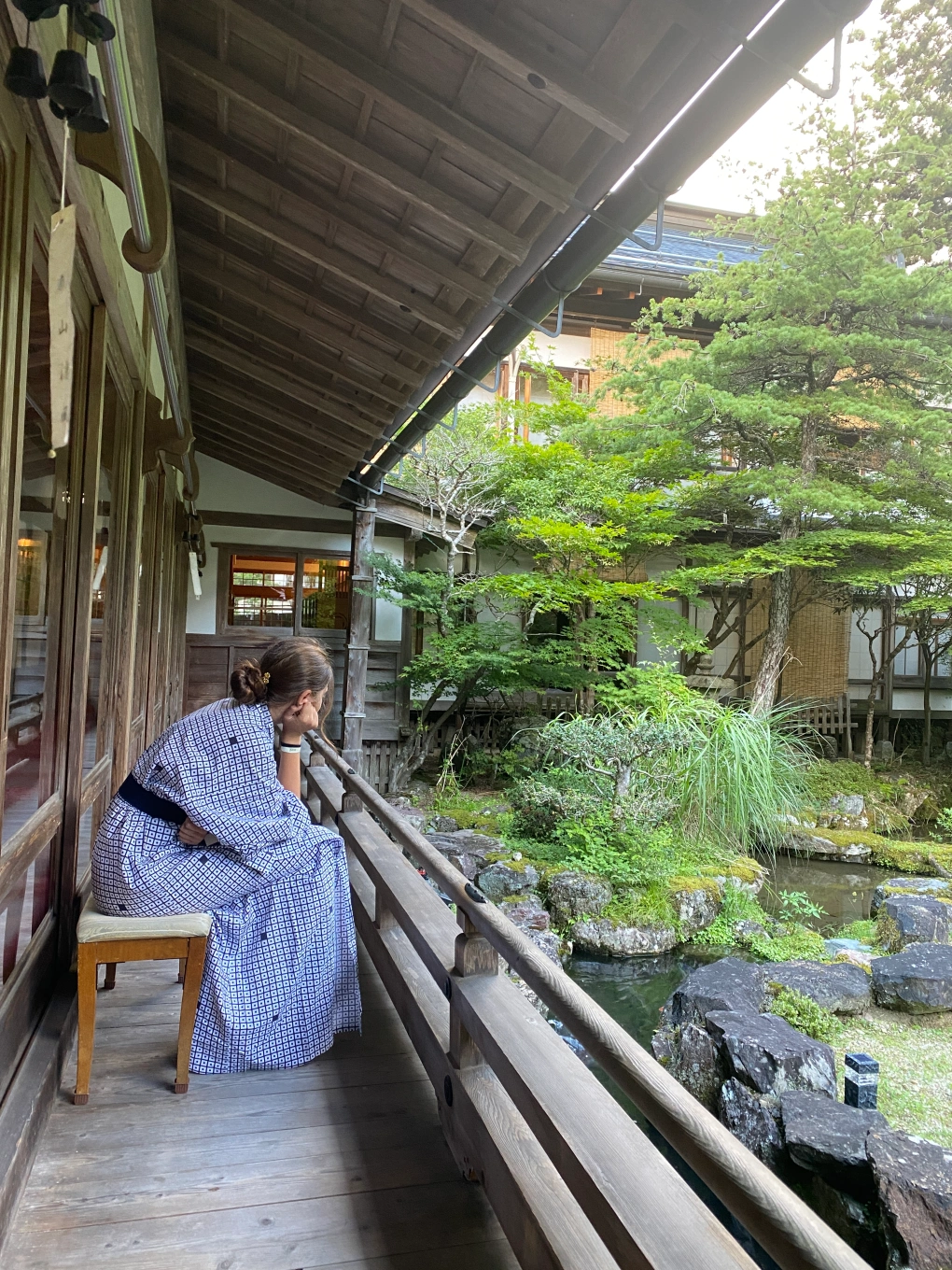 (one of my daughters – takes in her zen surroundings)
(one of my daughters – takes in her zen surroundings)
I also spent a little time at the temple next door, which was a lot bigger, with many more guests and monks who spoke really good English. That temple was called Eko-in and it offered meditation, free to guests, and a small amount to those staying in other temples. It was also from this temple that we started our night tour of the graveyard. You MUST book months in advance as they are popular. There were a few people who turned up hoping to tag along and they were turned away as they like to keep the group to no more than perhaps 15-20 people, which is more than enough. The cemetery is surprisingly not at all spooky. Ancient trees line stone paths that weave through the forest. More than 10,000 lanterns are kept eternally lit to shine a light to those who enter the forest. After the tour we walked back alone with our new Belgian friends to the temples at the other end of the forest. You are welcome to catch the bus, but we felt it was more atmospheric to return on foot.
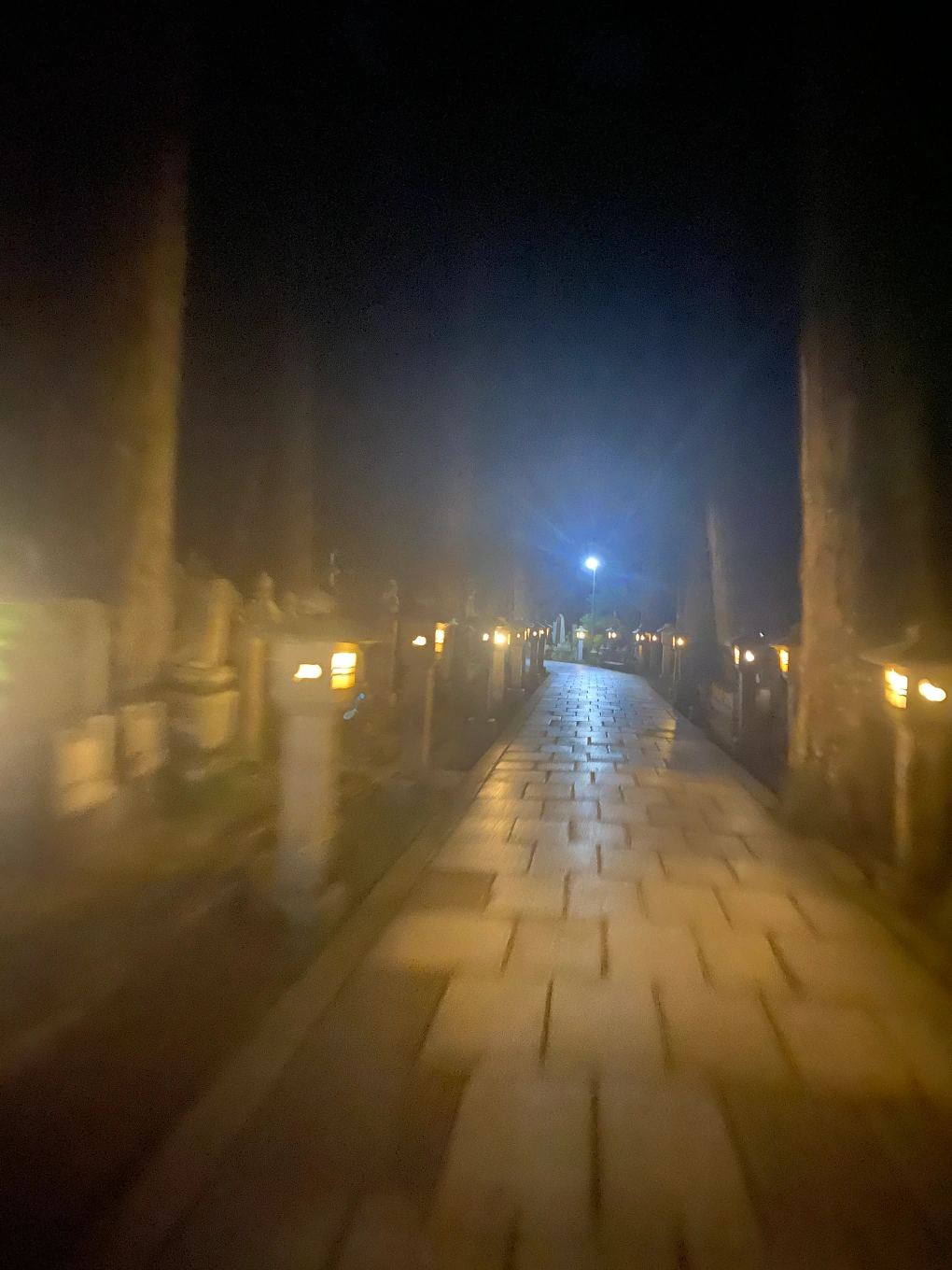 Eko-in also performs the ‘fire ceremony’ (goma-taki, Shingon Buddhism’s fire ritual) every morning in a little shrine at the entrance to the temple. It was absolutely mesmerising and you feel very immersed in the ceremony as the beating of the drum increases in intensity as the fire climbs higher and higher. This all takes place after the first morning prayers at 7.30am when you are still in a heady slumber from sleep. It is definitely otherworldly and something worth witnessing no matter where you sit on the religious spectrum.
Eko-in also performs the ‘fire ceremony’ (goma-taki, Shingon Buddhism’s fire ritual) every morning in a little shrine at the entrance to the temple. It was absolutely mesmerising and you feel very immersed in the ceremony as the beating of the drum increases in intensity as the fire climbs higher and higher. This all takes place after the first morning prayers at 7.30am when you are still in a heady slumber from sleep. It is definitely otherworldly and something worth witnessing no matter where you sit on the religious spectrum.
During the day there are so many temples to visit around Koyasan that you can do them all on foot or jump on and off the bus that snakes its way through the town.
We enjoyed visiting the Kongobujo Temple, which is the headquarters of Koyasan Shingon-shu Buddhism. Within it you will find the largest rock garden in Japan – 2349 square metres. The design is of a pair of dragons emerging from a sea of clouds to protect the Okuden. The dragons are made of 140 pieces of granite brought from Shikoku and the white sand is from Kyoto.
It is also worth visiting the cemetery in the day time and exploring yourself. It is free to wander around, although to enter the temples there is a small fee. There are places to eat if you are feeling peckish, but to be honest after our breakfast and walking around in the heat, albeit less humid than back in the cities, we just fancied something cooling – think ice cream and a chilled drink.
If you have time on your hands, I think it would be great to explore the ancient hiking trails, known as the Kumano Kodo Hiking Trails that have been used as pilgrimage trails for over 1000 years and are now designated UNESCO World Heritage. They are mean’t to be challenging, but a great way to see the country. You need to book inns to stay in advance. When I return to Japan I will definitely spend some days hiking. Read more about the hiking trails here.
Does Koyasan sound like a place YOU might like to visit on your trip to Japan?









